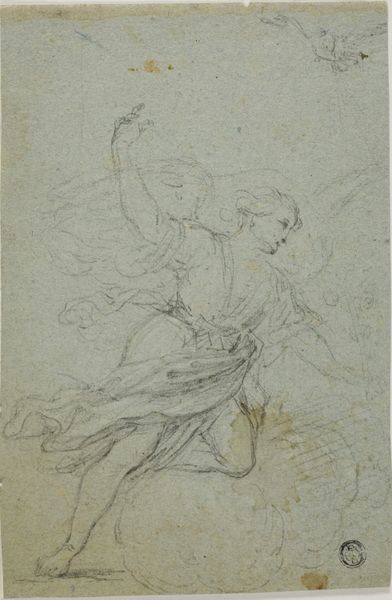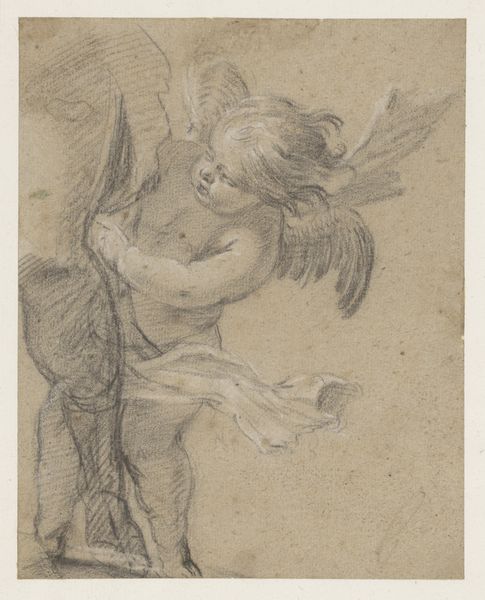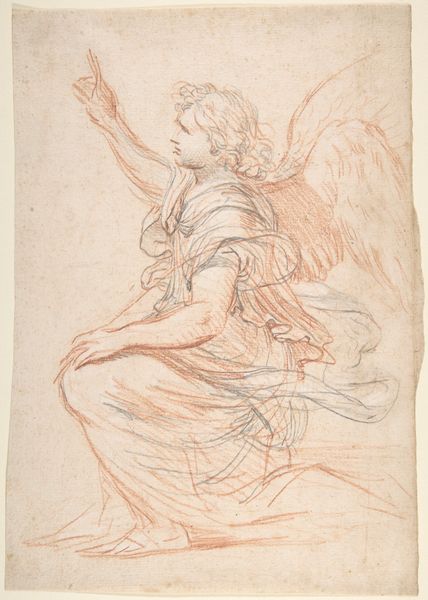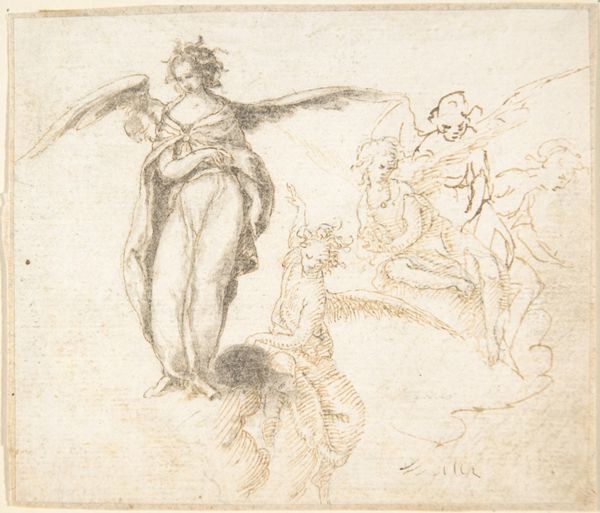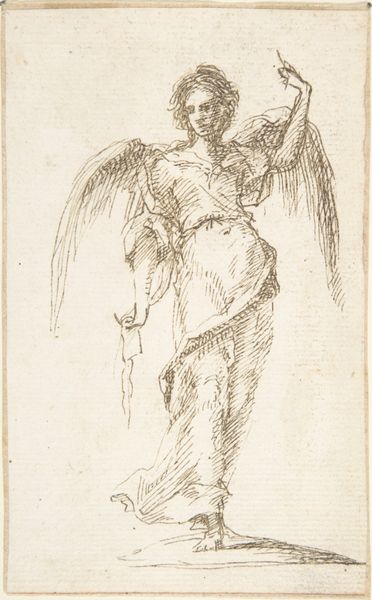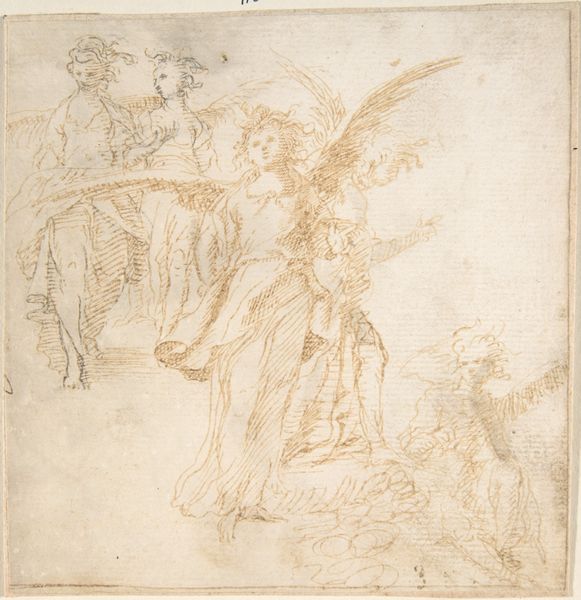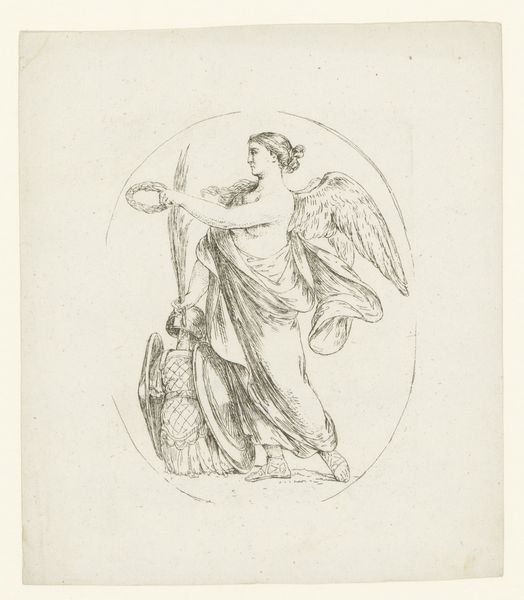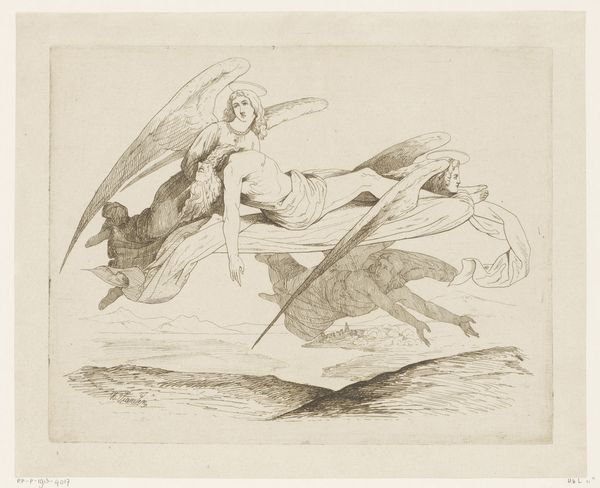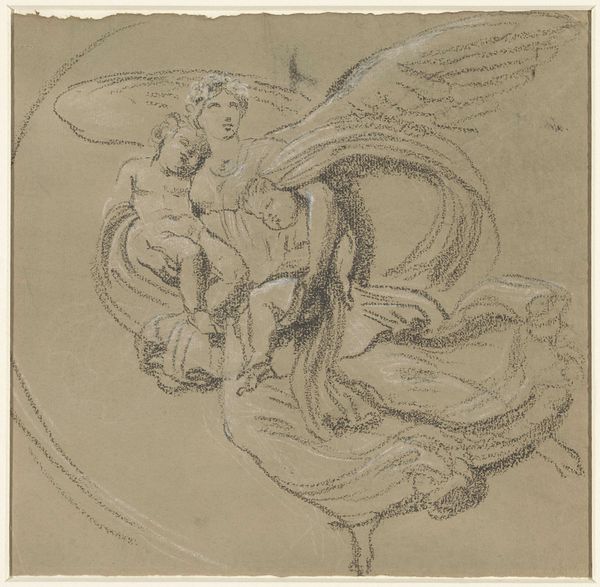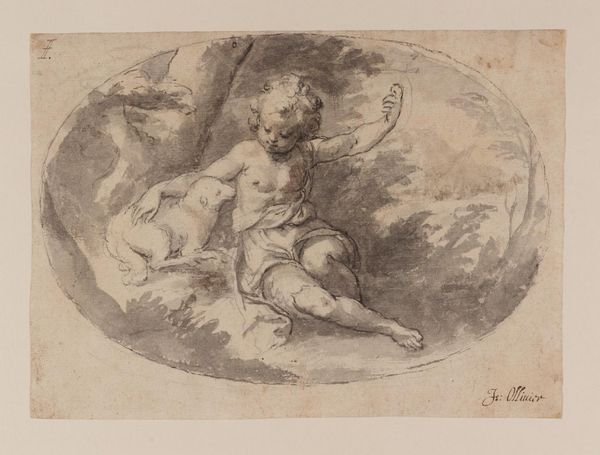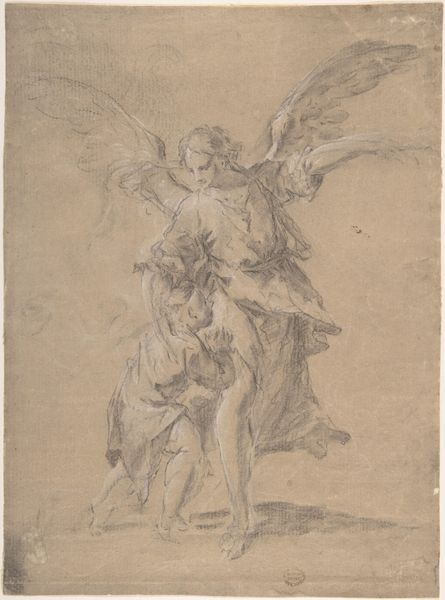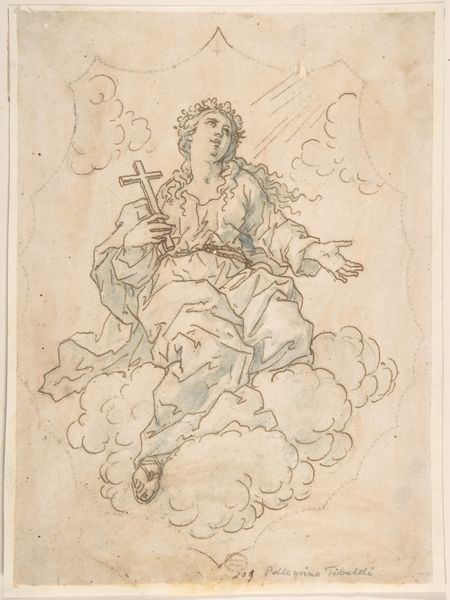
drawing, print, ink
#
drawing
#
baroque
# print
#
figuration
#
ink
#
angel
Dimensions: 6-5/16 x 6-5/16 in. (16 x 16 cm)
Copyright: Public Domain
Curator: Looking at Pedro Duque Cornejo’s "Angel Seated on Clouds", created sometime between 1700 and 1750... I'm immediately struck by how... restless it feels. Despite the title suggesting peaceful repose. Editor: Restless is an interesting word choice. The figure's diagonal posture does create a dynamic tension, counteracting the conventional stillness often associated with angels in art. Curator: It’s almost as if this angel's just perched there for a moment, gathering its thoughts before flitting off somewhere else. You can sense it in the swirling, sketch-like strokes. He is an angel that knows stuff. I’m sure of it. Editor: Agreed, the Baroque aesthetic truly shines through in Duque Cornejo’s bold use of line and contrast. You can see, as it’s rendered in ink, how he created depth and volume simply with these strategic hatched and cross-hatched lines to define the angel's form and the voluminous clouds. There’s this wonderful push and pull in terms of creating an overall harmony. Curator: Yes, the movement—it really draws you in. What fascinates me, beyond just the technique, is the expression. A pensiveness. It feels like she— or maybe *he* —is pondering something immense, a secret held only for a divine being. And don't even get me started with all the philosophical implications with light. Editor: Baroque art frequently used such emotional cues, reflecting both religious piety and dramatic flare. This is enhanced by your mention of chiaroscuro effects that contribute not just to mood but, structurally, gives great plasticity. Curator: Absolutely! To me, an artist like Duque Cornejo understood it. The medium becomes part of the message. A fleeting, earthly impression of something inherently not of this world. You know? It’s something, that even without much color, has the most vibrancy about it! Editor: Considering it hangs now within the esteemed collection of the Metropolitan Museum, here in New York City, it does seem that its aesthetic message is timeless and universal, continuing to speak to audiences from every cultural and religious tradition across time. Curator: What a thought.
Comments
No comments
Be the first to comment and join the conversation on the ultimate creative platform.

